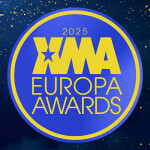Increasing its acceptance as a standard format, a Microsoft representative said in a statement that the company “intends to standardize the technology and will be submitting HD Photo to an appropriate standards organization shortly."
The original prototype, known as Windows Media Photo, was first unveiled at the Windows Hardware Engineering Conference in Seattle last May in a presentation made by Bill Crow, then-program-manager for Windows Media Photo.
HD Photo, among other things, allows users to compress images without losing detail, a common occurrence with JPEGs. A photo compressed using HD Photo retains its full range of color and data but is small enough to allow more storage space. It would also print faster and conserve battery life for handheld devices.
In his presentation, Crow displayed an image with 24:1 compression — four times that of typical digital cameras — whose details were noticeably more vivid than the JPEG he showed compressed at the same level.
HD Photo also can store 16-32 bits of data for each color, compared with JPEG’s eight bits, which makes variations in colors and shadows more visible.
The format’s ultimate success depends on its acceptance and compatibility with the photo industry, including camera companies and photo-printing kiosk manufacturers.
"We know for it to be successful there has to be whole ecosystem," said Rico Malvar, a Microsoft Research director who helped develop the format. He said the company is now in the position to create that ecosystem.






